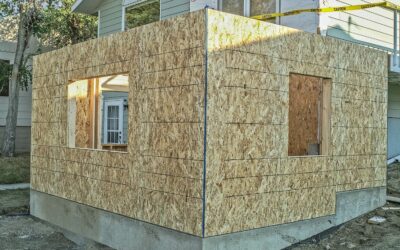
Home remodeling projects can be both exciting and daunting. Whether you’re looking to upgrade your kitchen, renovate your bathroom, or add an extension to your living space, understanding the process is crucial for a successful outcome.
In this complete guide, we’ll walk you through the key stages of a home remodeling project, from planning to completion.
Define Your Goals and Budget
Before diving into a home remodeling project, it’s essential to define your goals and establish a realistic budget. Ask yourself what you want to achieve with the remodel and prioritize your needs. Are you aiming for a modern kitchen, a more spacious bathroom, or additional living space? Understanding your goals will help guide the entire process.
Once you have a clear vision, set a budget that you can comfortably afford. Consider factors such as materials, labor, permits, and unexpected expenses. It’s wise to include a contingency fund for unforeseen issues that may arise during the project.
Hire a Professional Contractor
Choosing the right contractor is a critical step in the remodeling process. Research local contractors, read reviews, and ask for recommendations from friends or family. Look for professionals with experience in the type of project you’re planning.
Interview potential contractors to ensure they understand your vision and can work within your budget. Ask for references and examples of their previous work. A reputable contractor should be licensed, insured, and able to provide a detailed contract outlining the scope of work, timeline, and payment schedule.
Design and Planning
Collaborate with a designer or architect to create a detailed plan for your remodel. This phase involves making decisions about the layout, materials, colors, and overall aesthetics. The design should align with your goals, budget, and the functionality of the space.
During this stage, you may need to obtain necessary permits from local authorities. Your contractor should be familiar with the permitting process and can help facilitate the approvals needed for your project. Ensure that all the paperwork is in order before moving forward.
Demolition and Site Preparation
Once the plans are finalized and permits are obtained, the demolition phase begins. Depending on the scope of your project, this could involve removing walls, flooring, fixtures, or other elements. Demolition can be messy, so it’s crucial to work with a contractor who takes proper precautions to protect the rest of your home.
After demolition, the site is prepared for the new construction. This may involve structural work, such as reinforcing walls or installing new support beams. The site preparation sets the stage for the transformation of your space.
Construction and Installation
With the site prepared, the construction phase begins. This is where you’ll see your vision come to life. Skilled tradespeople, such as carpenters, electricians, plumbers, and painters, will work together to build and install the various components of your remodel.
Your contractor should provide a detailed timeline for each phase of construction. Keep in mind that unexpected delays can occur, so it’s essential to be flexible and patient. Regular communication with your contractor is crucial to staying informed about the progress and addressing any concerns that may arise.
Quality Control and Inspections
Throughout the construction process, it’s important to maintain quality control. Regular inspections should be conducted to ensure that the work meets the specified standards and adheres to the approved plans. Address any issues promptly to avoid complications later in the project.
In addition to your quality checks, there may be inspections required by local building authorities. These inspections typically occur at key points in the project, such as after framing, electrical, plumbing, and final construction. Ensure that all inspections are passed before proceeding to the next phase.
Final Touches and Finishes
As the construction phase nears completion, attention turns to the final touches and finishes. This includes installing fixtures, appliances, cabinetry, flooring, and any other details that bring the project together. The finishing touches are what give your remodel its distinctive character and make it feel like a cohesive, well-designed space.
Take the time to review the work and make a punch list of any remaining items that need attention. A punch list is a document that outlines the final tasks and ensures that everything is completed to your satisfaction before the project is officially concluded.
Clean-Up and Move-In
Once the final touches are in place and the project passes all inspections, it’s time for a thorough clean-up. Dust and debris from construction can settle throughout your home, so a professional cleaning crew may be necessary to ensure that your space is move-in ready.
If you’ve been living elsewhere during the remodel, the exciting moment arrives when you can finally move back into your upgraded home. Take the time to familiarize yourself with the new features and enjoy the transformation you’ve worked so hard to achieve.
Post-Project Evaluation
After the dust has settled and you’ve had time to settle into your newly remodeled space, it’s valuable to conduct a post-project evaluation. Assess the final result against your initial goals and expectations. Consider what went well and identify any areas that could have been improved.
Providing feedback to your contractor is important for their business and future projects. If you encountered challenges or were particularly pleased with certain aspects of their work, constructively share that information. This not only helps the contractor improve but also contributes to a positive working relationship.
Maintain and Enjoy Your Remodeled Space
Congratulations, you’ve successfully navigated the home remodeling process! Now, it’s time to enjoy your upgraded space. Regular maintenance is key to preserving the beauty and functionality of your remodel. Follow any care instructions provided by your contractor for specific materials and fixtures.
Keep in mind that a well-maintained home can increase its value over time. Whether you plan to stay in your home for years to come or are considering selling in the future, the investment you’ve made in remodeling can have lasting benefits.
Addressing Challenges and Changes
It’s not uncommon for unexpected challenges to arise during a home remodeling project. These challenges can range from unforeseen structural issues to delays in material deliveries. It’s essential to approach these challenges with flexibility and a proactive mindset. Your contractor should communicate openly about any issues and propose viable solutions.
Additionally, be prepared for the possibility of changes to the initial plan. As the project progresses, you might decide to make adjustments based on new insights or unforeseen circumstances. Changes can impact the timeline and budget, so it’s crucial to discuss and document any modifications with your contractor before implementation.
Environmental Considerations and Sustainability
In recent years, there has been a growing emphasis on environmentally friendly and sustainable building practices. If environmental impact is a concern for you, discuss eco-friendly options with your contractor during the planning phase. This could include using sustainable materials, energy-efficient appliances, or incorporating green building practices.
Many homeowners find that investing in sustainable features not only benefits the environment but also reduces long-term energy costs. From energy-efficient windows to eco-friendly flooring materials, there are numerous ways to make your remodel more environmentally conscious.
Technology Integration
The integration of technology has become increasingly popular in home remodeling projects. Consider incorporating smart home features such as programmable thermostats, security systems, or integrated audiovisual systems. Discuss these options with your contractor to ensure that the necessary infrastructure is in place during the construction phase.
Smart home technology not only enhances convenience but can also increase the overall value of your home. Think about how technology can improve your daily life and make your living space more efficient and enjoyable.
Financial Management and Payment Schedule
Throughout the project, it’s crucial to manage your finances effectively. Stick to the agreed-upon payment schedule outlined in your contract with the contractor. Timely payments help maintain a positive relationship with your contractor and ensure that the project stays on track.
If unexpected expenses arise, discuss them with your contractor before making any changes. Transparent communication about financial matters is key to avoiding misunderstandings and maintaining trust throughout the remodeling process.
Documentation and Record-Keeping
Keep thorough documentation of all aspects of your home remodeling project. This includes contracts, invoices, permits, and any communication with your contractor. Having a comprehensive record can be invaluable in case of disputes, for future reference, or resale purposes.
Take photos of the different stages of the project; these can serve as a visual record of the transformation and may be useful for insurance purposes. Organize your paperwork in a secure and easily accessible manner, ensuring that you have all the necessary information at your fingertips.
Conclusion
Embarking on a home remodeling project is a significant endeavor that involves careful planning, effective communication, and the ability to adapt to unforeseen challenges. By understanding the various stages of the process, addressing potential issues with flexibility, and incorporating elements like sustainability and technology, you can create a home that not only meets your current needs but also adds long-term value.
Remember that effective collaboration with a skilled contractor is the cornerstone of a successful remodel. Open communication, realistic expectations, and a proactive approach to challenges will contribute to a positive remodeling experience. As you enjoy your newly transformed space, take pride in the journey you’ve undertaken to make your house truly feel like home.
Read Other Blog Posts to Better Understand Home Design and Construction Remodeling Advantages
From Blueprint to Reality: Bringing Your Custom Home Vision to Life
Creating a custom home is a dream for many, offering the chance to...
The Art of Building Your Living Expansion: Crafting Your Dream Home with Additions
Creating the perfect home is a dream many aspire to. For some, it...
Practical Luxury: Bathroom Remodel Ideas for Family Comfort
In the realm of home improvement, few projects offer as much potential...
Ideas, Dream, Design, Do: How to Plan Your Home Remodel in 5 Simple Steps
Embarking on a home remodel is an exciting journey, turning your...
Open Concept Living Solutions: The Magic of Professional Wall Removal Services
In the realm of modern interior design, the concept of open living...
Custom Crafting Your Dream Space: The Impact of Interior Design Services
Your living space is a canvas waiting to be painted with the hues of...






